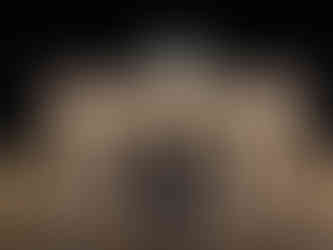Berlin Monuments and Moments
- bethjbrown
- Jun 29, 2022
- 3 min read
Our first night in Berlin and already the capitol city is showing us just how it never sleeps. Kyle volunteered to lead us on an evening tour of the major monuments in downtown Berlin. We set out around 10pm, a time when most of Bonn would have rolled up the sidewalks. I was surprised at the number of people still out in the streets, heading out for late dinner, drinks, or just enjoying the cooler temperatures. Kyle proved to be a knowledgable tour guide, winding us around through back streets and down large boulevards to each location, sharing stories about each along the way. Seeing the monuments and sites at night lent a different gravity to many of them.
I love night wandering, both the noise and quiet so different from the business of the day. Buildings loom differently, details in molding and decorative plasterwork holding. onto shadows. The bright lights of small grocers and connivence stores pulling in their wares for the night. Night is also better for storytelling. Your imagination can fill in more details around the facts of a location.
Checkpoint Charlie
Checkpoint Charlie was the best-known Berlin Wall crossing point between East Berlin and West Berlin during the Cold War, and one of the only places foreign diplomats and nationals could safely cross. There were also many attempted escapes through this narrow corridor. It was here that I learned about the brick line that marks where the wall was during the division of Berlin and Germany. You can see it on streets and sidewalks throughout Berlin.
The Empty Library
On May 10th, 1933 students and many professors who were part of the National Socialist Student Union burned over 20,000 book in Bebelplatz in front of Humbolt University in the middle of Berlin. Most of the books were from Jewish, communist, liberal and social-critical authors.
In 1995 Israeli artist Micha Ullman created this moving memorial, the Empty Library. It's easy to miss during the day, and even at night, for the memorial is actually underground. Set into the cobblestones of the square, one must look down into a glowing square to see the empty shelves representing the books and ideas lost.
This memorial hit hard given the current push to pull books about the LGTBQ+ community, books about race history and relationships, and other topics are being pulled rapidly from schools in our country.
Brandenburg Tor (Brandenburg Gate)
Like the Statue of Liberty of the Eiffel Tower, the Brandenburg Gate is a symbol of Berlin. This neoclassical behemoth is one of the main entrances into Berlin by way of Under the Lindens, and was created in 1791. Throughout its existence, the Brandenburg Gate was often a site for major historical events and is today considered not only as a symbol of the tumultuous histories of Germany but also of European peace and unity. I could not help but be swayed by the grandeur of the gate, the sheer size and scale of it. And of course the four horses pulling Victory in a chariot crowning the top!
The Reichstag
Just one block south of the Brandenburg Gate is the Reichstag, the seat of government in Berlin and the home base of the Bundestag, Germany's lower parliament. It's a beautiful classical building, and one of the few places flying large German flags. We walked by this during many times of the day on various days, and its always impressive. Opposite of the front of the Reichstag is Koningsplatz, a huge open area reminiscent of the mall in Washington.
Artist Sidenote: Before reconstruction began, the Reichstag was wrapped by the Bulgarian-American artists Christo and his wife Jeanne-Claude in 1995, attracting millions of visitors. This was one of the first times I ever heard of Christo and Jean-Claude, or the Reichstag for that matter!

Ampelmann
After a long walk through many serious topics and monuments it was a pleasure to learn about one of Berlin's favorite mascots, Ampelmann. The iconic Ampelmann was first a staple of East Berlin traffic lights. His cheerful little figure brought a little bit of color and light to East Berlin. After the fall of the wall and reunification, Ampelmann was one of the few things from East Berlin to remain. You can still see him directing walkers across busy streets in Berlin. Actually, you can tell if you are in east or west Berlin based upone the traffic signals and if Ampelmann tells you when to cross!
This video is a great history of the beloved Ampelmann















































Comments